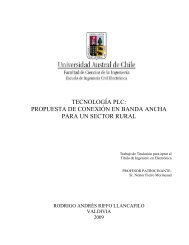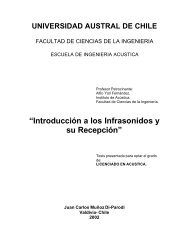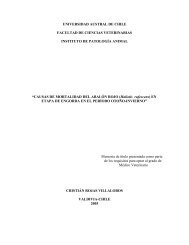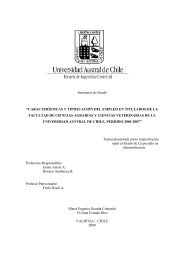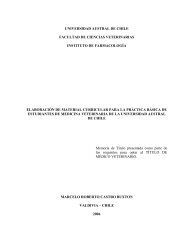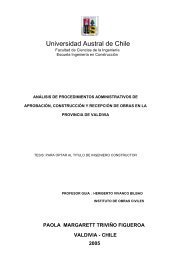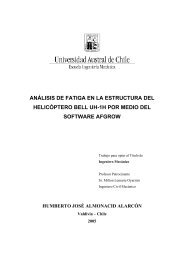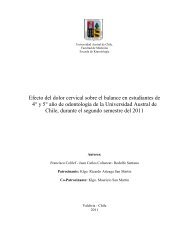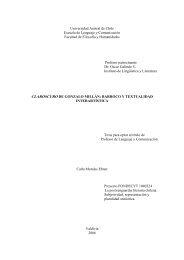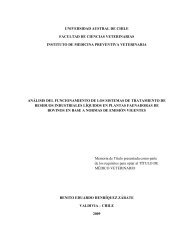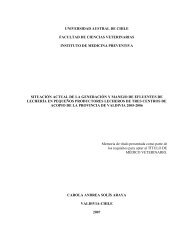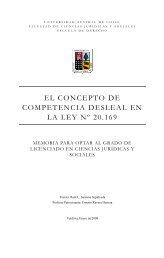sistema show control - Tesis Electrónicas UACh - Universidad ...
sistema show control - Tesis Electrónicas UACh - Universidad ...
sistema show control - Tesis Electrónicas UACh - Universidad ...
Create successful ePaper yourself
Turn your PDF publications into a flip-book with our unique Google optimized e-Paper software.
The quartz crystal and the 74393 provide the heart of the device: the 31.25 kHz MIDIbitrate-signal.<br />
The 4017 and 4015 form a serial-to-parallel-convertor, which places<br />
incoming MIDI-bytes on the bus (b0..b7). If it receives a note-on- or note-off-statusbyte<br />
on the selected channel, the bottom flip-flop (of leftmost 4013) is SET while the upper<br />
flip-flop of that same (leftmost) 4013 remembers whether it was an ON- or an OFFmessage.<br />
The bottom part of the rightmost 4013 just counts the number of databytes<br />
received: 0, 1, 0, 1, 0, etc. (thus supporting running-status-protocol). Finally, the upper<br />
flip-flop (of the rightmost 4013) accumulates all velocity bits to support switch-off with<br />
null-velocity. The rest is just trivial latching, multiplexing and some logic-gates.<br />
Note that quartz crystals with higher resonance frequencies are often easier to obtain<br />
(and cheaper) than low frequency crystals. In the circuit above, one may use crystals up<br />
to 8 MHz. As the market pushes us to higher and higher frequencies, it may even be<br />
possible in the future to cut costs by building, let's say, a 32 Mhz oscillator and adding a<br />
binary counter to obtain the 31.25 kHz MIDI-clock-frequency. For the opto-coupler,<br />
CNY17-1, 6N138, or 6N139 may also be used but watch the pin-layout!<br />
There might be errors in the diagrams above. I built 2 such devices (prototypes) which<br />
operate properly, but I made these drawings afterwards and I cannot really guarantee<br />
they are 100% correct. So if you don't understand basic building-blocks like shiftregisters,<br />
latches, multiplexers, gates, etc., you'd better not start with it. I hope the timing<br />
diagram is of some help though.<br />
Anyway, if you encounter any mistakes in these drawings, please e-mail me. But please<br />
do not ask me whether I can build this hardware for you, or whether I can sell it to you<br />
(for I am a designer, not a Plumbum-sniffer:-). Well, happy soldering then!!<br />
A4-3



